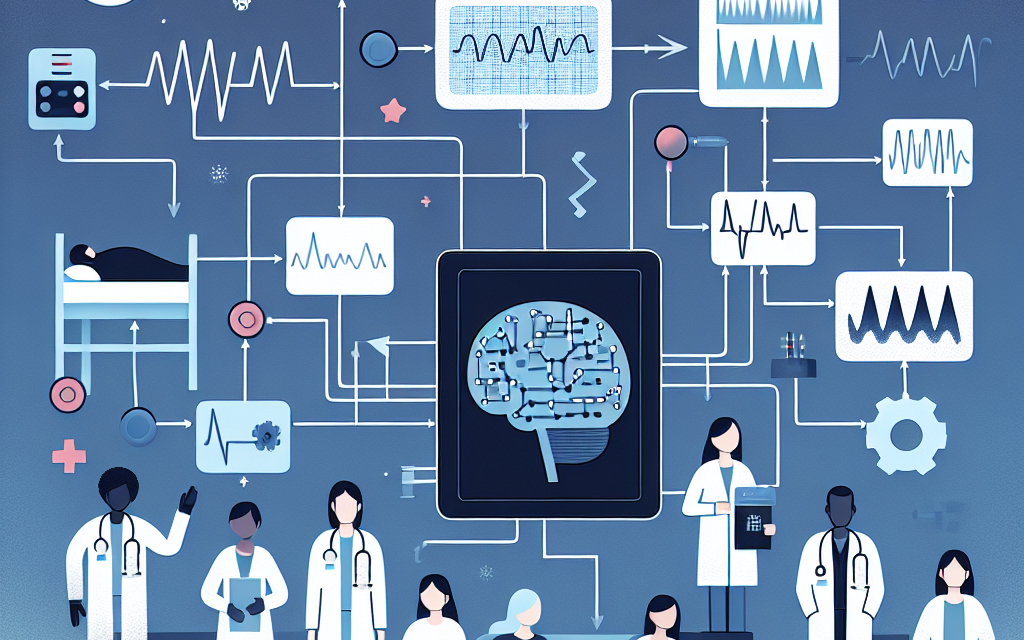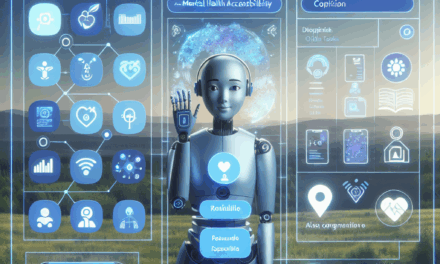AI Algorithm Developed by Mount Sinai Team to Identify Sleep Disorders
Sleep disorders affect millions of people worldwide, leading to significant health issues and decreased quality of life. The advent of artificial intelligence (AI) has opened new avenues for diagnosing and treating these disorders. A groundbreaking AI algorithm developed by a team at Mount Sinai Health System has shown promise in identifying sleep disorders with unprecedented accuracy. This article delves into the development, functionality, and implications of this innovative technology, exploring its potential to revolutionize sleep medicine.
Understanding Sleep Disorders
Sleep disorders encompass a range of conditions that disrupt normal sleep patterns, affecting both the quantity and quality of sleep. Common sleep disorders include insomnia, sleep apnea, restless legs syndrome, and narcolepsy. These conditions can lead to severe health consequences, including cardiovascular disease, obesity, diabetes, and mental health issues.
According to the American Academy of Sleep Medicine, approximately 50-70 million adults in the United States suffer from a sleep disorder. The prevalence of these disorders highlights the urgent need for effective diagnostic tools and treatment options. Traditional methods of diagnosing sleep disorders often involve subjective assessments, such as patient interviews and sleep diaries, which can be unreliable and time-consuming.
Recent advancements in technology, particularly in AI and machine learning, have the potential to transform the landscape of sleep medicine. By analyzing vast amounts of data, AI algorithms can identify patterns and anomalies that may indicate the presence of a sleep disorder, leading to more accurate and timely diagnoses.
The Development of the AI Algorithm
The AI algorithm developed by the Mount Sinai team is a product of extensive research and collaboration among experts in sleep medicine, data science, and artificial intelligence. The project began with the goal of creating a tool that could analyze sleep data more effectively than traditional methods.
The team utilized a large dataset of sleep studies, including polysomnography (PSG) recordings, which are considered the gold standard for diagnosing sleep disorders. PSG measures various physiological parameters during sleep, such as brain activity, eye movements, heart rate, and respiratory patterns. By training the AI algorithm on this rich dataset, the researchers aimed to enhance its ability to recognize sleep disorders.
Key steps in the development process included:
- Data Collection: The team gathered a diverse dataset from multiple sources, ensuring a comprehensive representation of different sleep disorders.
- Feature Extraction: Researchers identified critical features from the PSG data that could serve as indicators of specific sleep disorders.
- Algorithm Training: The AI model was trained using machine learning techniques, allowing it to learn from the data and improve its predictive accuracy over time.
- Validation: The algorithm underwent rigorous testing against established diagnostic criteria to ensure its reliability and validity.
- Clinical Integration: The final step involved integrating the algorithm into clinical practice, allowing healthcare providers to utilize it in diagnosing sleep disorders.
The culmination of these efforts resulted in an AI algorithm capable of analyzing sleep data with remarkable precision. The Mount Sinai team published their findings in a peer-reviewed journal, showcasing the algorithm’s ability to identify various sleep disorders, including obstructive sleep apnea and insomnia, with high sensitivity and specificity.
How the AI Algorithm Works
The AI algorithm developed by the Mount Sinai team employs advanced machine learning techniques to analyze sleep data. At its core, the algorithm uses deep learning, a subset of machine learning that mimics the way the human brain processes information. This approach allows the algorithm to identify complex patterns in the data that may not be immediately apparent to human clinicians.
Here’s a breakdown of how the algorithm functions:
- Data Input: The algorithm receives input in the form of PSG recordings, which include various physiological signals collected during sleep.
- Preprocessing: The raw data undergoes preprocessing to remove noise and artifacts, ensuring that the algorithm analyzes clean and relevant information.
- Feature Learning: The algorithm automatically extracts features from the data, identifying key indicators of sleep disorders without the need for manual intervention.
- Classification: Using the learned features, the algorithm classifies the sleep data into different categories, indicating the presence or absence of specific sleep disorders.
- Output Generation: The final output includes a report detailing the algorithm’s findings, which can be used by healthcare providers to inform their diagnostic decisions.
The algorithm’s ability to process and analyze large volumes of data quickly and accurately sets it apart from traditional diagnostic methods. In clinical trials, the AI algorithm demonstrated a significant reduction in the time required to diagnose sleep disorders, allowing for faster intervention and treatment.
Clinical Implications and Benefits
The introduction of the AI algorithm into clinical practice has far-reaching implications for the field of sleep medicine. By enhancing diagnostic accuracy and efficiency, the algorithm offers several key benefits:
- Improved Diagnostic Accuracy: The AI algorithm has shown higher sensitivity and specificity compared to traditional diagnostic methods, reducing the likelihood of misdiagnosis.
- Time Efficiency: The algorithm significantly reduces the time required for diagnosis, enabling healthcare providers to see more patients and provide timely interventions.
- Personalized Treatment Plans: By accurately identifying specific sleep disorders, the algorithm allows for more tailored treatment plans that address individual patient needs.
- Accessibility: The use of AI in sleep medicine can help bridge the gap in access to care, particularly in underserved areas where sleep specialists may be scarce.
- Cost-Effectiveness: By streamlining the diagnostic process, the algorithm has the potential to reduce healthcare costs associated with misdiagnosis and ineffective treatments.
Moreover, the AI algorithm can serve as a valuable tool for researchers studying sleep disorders. By providing insights into the underlying mechanisms of these conditions, the algorithm can facilitate the development of new treatment modalities and interventions.
Challenges and Future Directions
While the AI algorithm developed by the Mount Sinai team represents a significant advancement in sleep medicine, several challenges remain. Addressing these challenges will be crucial for the successful integration of AI into clinical practice.
Some of the key challenges include:
- Data Privacy and Security: The use of patient data for training AI algorithms raises concerns about privacy and security. Ensuring that patient information is protected is paramount.
- Regulatory Hurdles: The integration of AI into healthcare is subject to regulatory scrutiny. Navigating the approval process can be time-consuming and complex.
- Clinical Acceptance: Gaining the trust and acceptance of healthcare providers is essential for widespread adoption. Education and training will be necessary to familiarize clinicians with the technology.
- Bias and Fairness: AI algorithms can inadvertently perpetuate biases present in the training data. Ensuring that the algorithm is fair and equitable across diverse populations is critical.
- Continuous Improvement: The field of sleep medicine is constantly evolving. The algorithm must be regularly updated to incorporate new research findings and clinical guidelines.
Looking ahead, the future of AI in sleep medicine appears promising. Ongoing research and development efforts will likely lead to further advancements in diagnostic accuracy and treatment options. Additionally, as AI technology continues to evolve, we may see the emergence of new applications in sleep medicine, such as predictive analytics for identifying patients at risk for sleep disorders before symptoms manifest.
Conclusion
The AI algorithm developed by the Mount Sinai team represents a significant leap forward in the diagnosis and treatment of sleep disorders. By harnessing the power of artificial intelligence, this innovative tool has the potential to improve diagnostic accuracy, enhance patient care, and streamline clinical workflows.
As we continue to explore the intersection of technology and healthcare, it is essential to address the challenges associated with AI integration while maximizing its benefits. The future of sleep medicine is bright, with the promise of more effective and personalized treatment options on the horizon.
In summary, the Mount Sinai team’s AI algorithm not only exemplifies the potential of technology to transform healthcare but also underscores the importance of interdisciplinary collaboration in addressing complex health issues. As we move forward, continued research and innovation will be key to unlocking the full potential of AI in improving sleep health for individuals worldwide.





